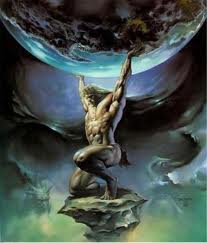Story Ideas
On Ideas: The true novelist, poet, musician or artist is really a discoverer.
— Rosamund E. M. Harding
Many writers say that the germ of a story idea is ephemeral. Ideas come from something heard, remembered or written about. This triggers something, an emotion or perhaps a memory. Novelist Oakley Hall explains the genesis of story ideas this way: “The First Insight, the germ, the prod of the feeler, is unconscious even though it may stem from something as actual as a newspaper headline or the sight of a child’s sneaker beside a skid-mark in the street. Something has stirred in the perceptual domain, an image flashing to mind that sets up intriguing questions. The conscious mind now ponders these. It makes lists, sets up a system of file cards for research. It formulates computer entries in its left brain with its linear, analytic mode and saturates it with relevant information”. The creative process also involves the unconscious.
Novel Ideas
Saul Bellow, a highly regarded novelist, once called fiction “the higher autobiography”. Steven King says On Writing, “every character you write is partly you”. I would say also, potentially, someone you know. What we need is a place to start. These starting points are often a combination of sparks. John Briggs recounted in The Fire in the Crucible that William Faulkner found his idea for the novel The Sound and the Fury. In a combination of scenes from his own childhood and the characters he had just written about in a short story. That morphed into an image of a young girl with muddy drawers, up in a tree peering through a window at the wake of her grandmother. The image and the memories were intriguing enough to draw him into imagining and writing the novel.
Neil Gaiman, the author of The Ocean at the End of the Lane and other novels, gave some interesting insights in his blog post, “Where do you get ideas?” He recommended that the creative process could best begin with asking questions like “what if” and “if only.” It can also be an image or idea such as, “a woman sitting in a dark room filled with empty faces,” or an idea, “a boy who wants to know about magic. Plots start to generate themselves when one begins to ask oneself questions about whatever the starting point is.”
Unlocking Ideas
Matthew Weiner, creator of “Mad Men,” recently shared his experience breaking out of writer’s block after finishing the final series of the TV show. He had decided to write a novel, as a creative pivot, particularly for someone used to writing for TV. The idea for Heather, the Totality came to him while walking around the Upper East Side of New York. He saw an attractive teenage girl walking into an apartment building under construction and was struck by the look on the face of one of the construction workers. Later, when he began to think about the idea for his novel, that image floated back into his consciousness. It became the germ for his psychological thriller about members of a wealthy New York family whose lives cross with a sociopathic construction worker.
What we find is that the image, something observed or an idea, sparks an emotion within us. It can lead to combining that with something else. Orson Scott Card, in How to Write Science Fiction and Fantasy, said, “Good stories don’t come from trying to write a story the moment I think of the first idea. All but a handful of my stories have come from combining two completely unrelated ideas that have been following their own tracks through my imagination. These come from ideas that ripened for many months – usually years – between the time I first thought of them and the time they were ready to put into a story.” Good stories, therefore, follow an archetypal structure.
Using Other Stories, Myths and Mash-Ups to Stimulate Our Creativity
Mythology is the fiction that puts outside of us, in the forms of image and metaphor, a picture of what we are living all the time – our own being.
— Robert Sardello
Many people find turning to mythical stories can inspire their imagination. From a Jungian point of view, these stories are archetypal encounters that tell us how the collective psyche, the one common to all of us, undergoes development. Myths, fairy tales and other stories that have come down through the centuries are generally not considered to be “owned” by any given person. Most are in the public domain, which means that the original author’s intellectual property rights have expired. They are available to the public and not subject to copyright protection. These stories can be used to help come up with our own story lines. This is done by altering the characters and the settings. You can add a motive for the conflict with the antagonist and alter the point of view from which the story is told. Myths can dynamically activate and trigger the discovery of new possibilities.
Ideas in Motion
This was the case with both Suzanne Collins and Gregory Maguire. Collins best-selling Hunger Games was inspired by a mash-up of the myth of Theseus and the Minotaur, her own memories, and contemporary Reality TV. In the myth, as punishment for challenging Crete, Athens was forced to send seven boys and seven girls to Crete every nine years. The children were thrown into the Labyrinth and eventually were devoured by the Minotaur, until Theseus volunteered to go and slay the Minotaur. Mythic stories provide great story ideas.
Reality TV and her memories of her father’s stories about Vietnam strengthened this mythic inspiration. In an interview Collins said, “I was channel surfing, between reality TV programs and actual war coverage. On one channel, there’s a group of young people competing for I don’t even know; and on the next, there’s a group of young people fighting in an actual war. I was really tired, and the lines between these stories started to blur in an unsettling way. That’s the moment when Katniss’s story came to me. One was a reality show with young people competing, another actual footage about young people fighting the war in Iraq”.
Cultural myth also inspired Gregory Maguire’s groundbreaking novel Wicked, made into a Broadway musical. It was based on a more contemporary mythic story, L. Frank Baum’s Wizard of Oz. Rather than retelling Baum’s tales, Maguire’s story focuses on the backstory that led up to Dorothy’s arrival. It centers on Elphaba, the misunderstood green-skinned girl who grows up to be the Wicked Witch of the West.
At the end of the day, creativity is a process. Inspiration for our stories is one of the stages that occurs after we focus on the problem.





 Creative Process of Writing Stories
Creative Process of Writing Stories